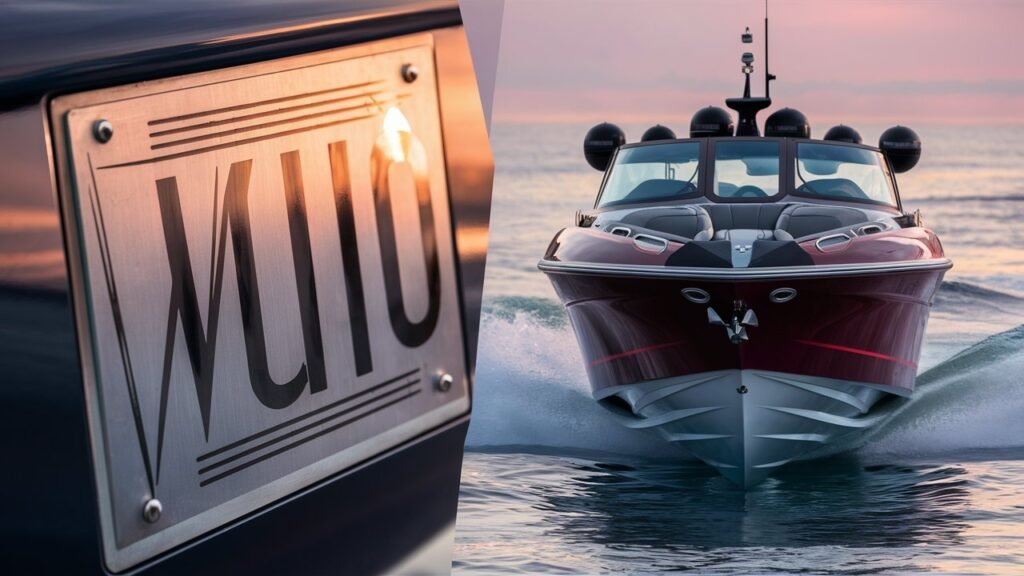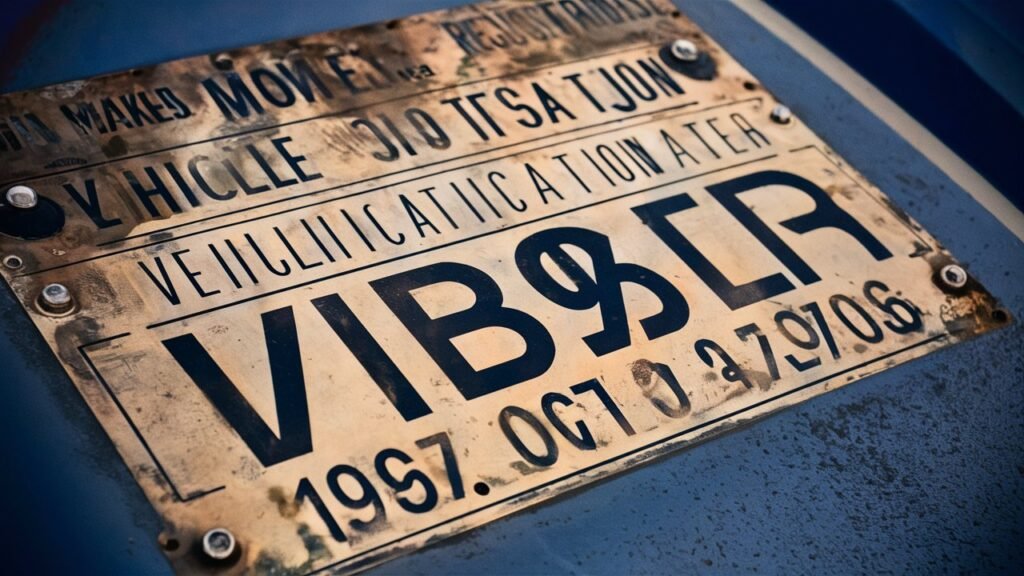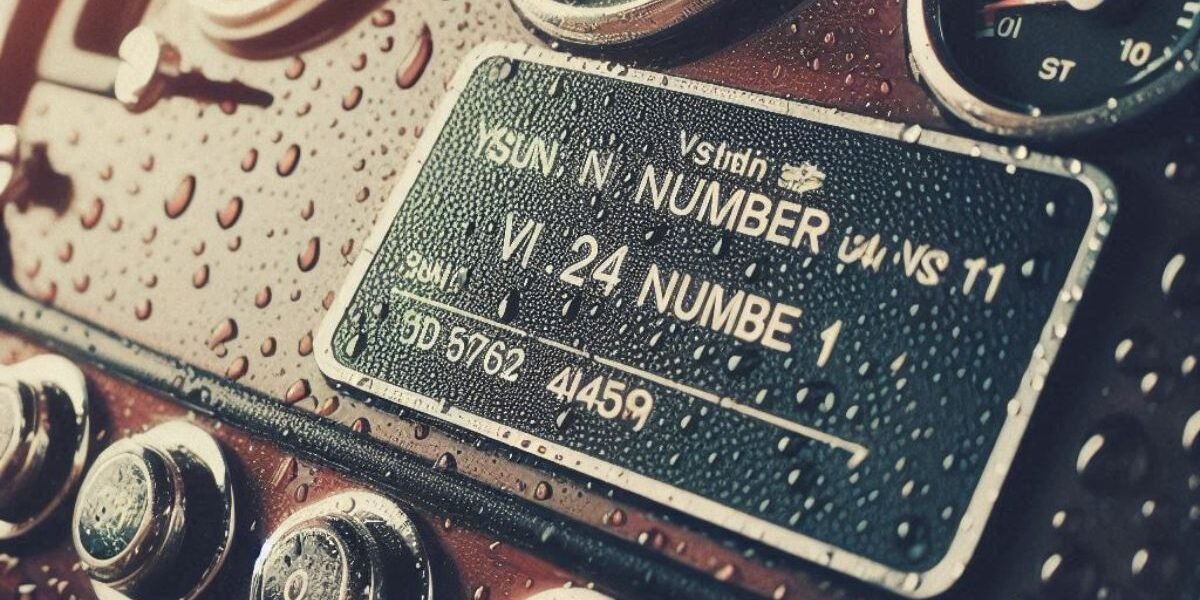Where is the VIN on a boat?
Where is the VIN on a boat, you may wonder when buying a boat or needing to locate it for registration purposes.
Boats have a hull identification number (HIN), which is commonly called the vehicle identification number (VIN) in cars.
The HIN, which serves as an identifier within the industry, is usually located at the boat’s stern on the starboard side.
It’s also important to note that this identification number is always affixed somewhere on the vessel’s hull; it can be found either on its side or on a plate reading “hull ID.”
It is essential to know where the HIN is located as it is required for registration and is used to track the boat’s history.
If you cannot find the HIN number on your boat, a marine mechanic can assist in locating it for you.
Understanding Boat Identification

Understanding Boat Identification
For boat identification reasons, knowing the place where you can find needed information is vital.
Each vessel has a hull identification number (HIN) that differentiates it from others.
This is so because it is usually found on the body of a ship either at the backside of the stern or aft section.
The HIN represents a manufacturer’s combination of letters and numbers assigned to each ship hull produced by them since 1972 when all boats made in USA must have HIN.
It should be noted, however, that older boats may carry a hull serial number instead.
Such numbers are usually either engraved or stamped on the sides of these watercrafts’ bodies.
Similarly, boat engine details are as important as the boat’s hull information.
Boat engines also have their own HINs.
Normally, this HIN can be located on one plate or sticker attached to an engine itself. This number completes vehicle registration with DMV and other motor cars departments.
Likewise, for every boat owner who wants to operate within legal boundaries, both the hull and engine HINs must match those given in its title.
Moreover, even boat trailers have their own unique identifiers including Hull Identification Number (HIN).
Like mannered vessels do have such numerals engraved or printed out unto them typically in upper right corner except for some changes later made in this practice too.
What is a HIN on a Boat?

To appreciate boat identification, in this case, one should have an idea of where they can obtain the information that is required.
A unique character for every boat that shows its origin as a hull identification number (HIN).
Usually this number can be found on the stern or aft part of the boat.
The HIN is a series of numbers and letters given by manufacturers to every single vessel built in their factories since 1972. Hins are requirement by law in US for all boats manufactured.
The older types of boats may not have this number but will instead have a serial number for the hull. This number usually appears on the hull either through engraving or stamping.
When it comes to boat identification, appropriate knowledge about engine details is vital.
However, boats with engines also need to assign HINs for these parts too.
This plate has the HIN of the engine which is placed on it. This identification when registering it at DMV or other motor vehicles authorities is crucial.
Boat owners must make sure that both the Hull Identification Number (HIN) on their boat’s hull matches that provided on their title certificate and its engine’s HIN do match those given on such documents as registration papers and/or titles.
There are also trailers assigned special characters just like any other vehicles. Additionally, there will be a hull identification number in relation to a trailer for a water going vessel.
This digit is generally etched or punched onto the carrier around its upper right hand corner most often.
Why is the VIN Number Important for Boats?
VIN numbers are very important to boats because they provide an individual identification for each vessel.
Like a VIN number of a motor vehicle, the boat’s VIN number contains vital information about its history and specifications.
This is helpful when buying or selling a boat so that the buyer will have correct information about the vessel.
Also, stolen boats can be traced through VIN numbers and this would help in curbing theft cases in future.
With no proper VIN number, it might be challenging to prove the ownership of a boat during disputes.
These HINs are found in a specific location to ensure easy access for identification purposes.
Locating the VIN on a Boat

Locating the VIN on a Boat
VIN numbers are essential to boats because they serve as unique symbols for each vessel.
Just like a car’s VIN, a boat’s VIN number gives significant information regarding the boat’s background and specifications.
This is helpful when purchasing or selling a boat because it confirms that the purchaser gets accurate information about the vehicle. The location of the VIN on a boat is important to know about.
Unlike cars where the VIN is normally located on the dashboard or driver’s side door jamb, on a boat the VIN is referred to as HIN which stands for hull identification number.
The HIN is an exclusive blend of letters and digits specific to each vessel in much the same way as Vin does for a car. To get to know where you can find HIN on your boat, there are several places you should check out.
One common place would be at the back of the boat, usually on its right side part near its transom. On other occasions, it can also be found inside of engine compartment or within hull itself
For any loss in registration processes, insurance matters and incidents involving thefts; it becomes prudent to locate and record your boats HIN down as may be applicable herein
Moreover, authorities could employ this method in future if they need assistance from various bodies concerning anti-theft measures pertaining stolen vessels at sea. A legitimate proof of ownership in case of any dispute related ownership cannot be established without proper Vin Number
Rudder or transom area of most boats’ hulls typically house these Vin Numbers. These Hin’s are put at specific spots so that anyone who sees them can easily identify them.
Typical VIN Placement on Boats
VIN placement on boats is normally at the right side close to the top of transom.
This particular position makes it possible for it to be seen and provided with whenever necessary for purposes of registration or examination.
A VIN number is usually engraved or stamped into the fiberglass or metal surface, ensuring that this identification number remains intact no matter how long.
It must always be visible and readable so as to identify the boat in cases such as theft or otherwise when legal issues arise.
Moreover, accessories like trailers should not hide the VIN from being spotted by authorities when needed
In general, suitable placements of a Boat’s Vehicle Identification Number (VIN) are important for regulatory compliance and security reasons.
Identifying VIN Numbers on Different Boat Types

Identifying VIN Numbers on Different Boat Types
It is crucial to know where one should look when it comes to identifying VIN numbers for different boat types.
They are usually situated on the hull of the boat around the transom.
The VIN number may be found inside the engine compartment or even a plaque close to the steering console in case of smaller boats.
You need to compare a given VIN number with documentation pertaining to that particular vessel in order not to purchase stolen or damaged watercrafts.
Moreover, many boat manufacturing companies stamp this number on their engines’ blocks for easy identification purposes.
In some old models, it can be found in very hidden places which are hard to locate them easily.
For guidance locating the VIN, refer to your owner’s manual, or contact your boat’s manufacturer directly.
When considering used boats always inspect its VIN number prior any purchases.
This can help you from buying a lemon or one with little fussy past issues.
This information will enable you to make a better decision about what kind of boat you want by knowing where you should find its VIN and how it can be authenticated.
Beyond that, aside from brake system, we can also tell much about what type of propulsion system is in use in such a ship by just looking at its V.I.N. number
The propulsion system; whether outboard motor-driven, jet drive powered or inboard motor-driven is instrumental as far as performance and maintenance requirements for such vessels are concerned.
Decoding this series may help owners understand their boats’ individual specifications and needs.
Importance of HIN and VIN in Boat Ownership
For boat ownership, HIN and VIN are very vital reference codes.
The manufacturer assigns it as a unique code that contains important information about the brand of the boat, model and serial number.
By law, this must be permanently fixed on the boat’s hull. In like manner, VIN is a special number given to vehicles like boats which tells us about its make, model and year of manufacture.
Registration, insurance and keeping track of them all require these two identification numbers.
Consequently, in case of theft or accidents in which case the owner may be involved in fraudulent activities if they do not have their HIN and VINs with them; they could provide guidance for arrests by authorities.
Therefore it becomes necessary for boat owners to ensure that they have the correct HINs as well as VINS so as to safeguard their investment and abide by the law.
Registering Your Boat with HIN and VIN
When to register a boat, it’s necessary to offer the right identification figures that include the Hull Identification Number (HIN) and Vehicle Identification Number (VIN).
They are important in determining which boat is yours or whether it meets some requirements.
This HIN has 12 letters and numbers such as those which appear on the hull of your ship.
As for the latter, VIN uses a unique combination of letters and digits to identify motor vehicles, and it is available on dashboard or door jamb of your ship.
These numbers help authorities trace owners’ details, ensure safety standards have been met, and prevent thefts.
In conclusion, you must legally register a vessel using HIN and VIN so as not to fall into legal problems by operating your boat in water that might lead to penalties if found there with unregistered documents.
When registering a vessel, always provide accurate information about its HIN and VIN in order to avoid any delay or complications.
Failure to register your boat with these identification numbers could result in fines or penalties, so it is important to comply with the registration requirements set by your state’s boating authorities.
By following the proper procedures and ensuring that your boat is registered with the HIN and VIN, you can enjoy your time on the water with peace of mind knowing that your vessel is properly documented and recognized.
conclusion
Understanding the meaning of HIN and VIN in relation to boat ownership and transactions is paramount for both buyers and sellers. The sense of these abbreviations cannot be underestimated as far as buying or selling boats is concerned.
These unique identifiers play a vital role in tracking the history, ownership, and specifications of boats, as well as ensuring compliance with regulations and safety standards. These unique symbols are extremely useful when it comes to knowing everything about the past owners, age range, technical characteristics of this sort of vehicles, as well finding out whether they meet regulatory requirements.
Throughout this article, we’ve explored the importance of locating and verifying the authenticity of the HIN and VIN when purchasing a boat. In this piece there have been several discussions on why one should make efforts to identify where HIN and VIN are located if at all they wish to buy a boat.
We’ve also discussed the role of these identification numbers in registering boats, checking their history, and ensuring proper documentation in transactions. Furthermore, in this paper we have tried to explain why HINs may be considered as fundamental indicators which can help register ships, discover their history or establish that relevant papers are available while concluding agreements.
By following the tips provided and conducting thorough checks of the HIN and VIN, buyers can make informed decisions when purchasing a used boat and sellers can facilitate smooth transactions while adhering to legal requirements. Buyers can benefit from observing those guidelines offered by viewing properly such things as Hull Identification Number (HIN) together with Vehicle Identification Number (VIN).




